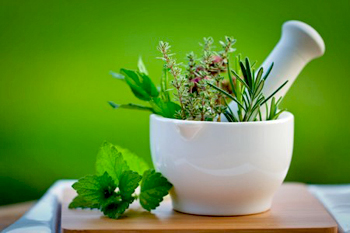May 6: Many parents of children with debilitating gastrointestinal disorders may be frustrated by the lack of good treatment options and tempted to try herbal remedies at home, but a new study suggests they should proceed with caution.
 Researchers examined data from 14 previously published studies with a total of 1,927 children suffering from problems like diarrhea, dehydration, colic, constipation, abdominal pain and irritable bowel syndrome. They didn’t have enough data to combine results from multiple small studies to offer definitive proof that herbal remedies might work for any of these health problems.
Researchers examined data from 14 previously published studies with a total of 1,927 children suffering from problems like diarrhea, dehydration, colic, constipation, abdominal pain and irritable bowel syndrome. They didn’t have enough data to combine results from multiple small studies to offer definitive proof that herbal remedies might work for any of these health problems.
But some of the small studies did suggest certain herbal medicines might help ease diarrhea, abdominal pain and colic. And the studies didn’t find serious side effects associated with herbal remedies.“The lack of conclusive research is unfortunately a general problem in pediatrics, but a special problem in herbal medicine is that for many herbal remedies no licensed and standardized products are available,” said lead study author Dr. Dennis Anheyer of the University of Duisburg-Essen in Germany.
In other words, even if evidence shows an herb may be safe and effective for a specific health problem, that doesn’t necessarily mean that every single version of that herb available for sale would work as well or be free of side effects.
When researchers looked at four studies with a total of 424 participants, they found some evidence suggesting that a variety of herbal remedies might help diarrhea: a plant in the rose family called potentilla erecta, carob bean juice, and an herbal compound preparation with chamomile.
One study with 120 participants also suggests that peppermint oil might help curb the duration, frequency and severity chronic abdominal pain that doesn’t have a clear medical explanation.And, fennel might help ease colic symptoms in babies according to a review of five small studies of herbal remedies for infant colic.
While it’s possible herbal remedies might be used in addition to traditional medications or to help reduce reliance on drug therapy, parents should still see a doctor before trying out herbal therapies on their own, Anheyer said by email.
Another reason for caution is that even the studies in the current analysis that found herbal remedies effective don’t show how large the effects are, noted Dr. Peter Lucassen, a researcher at Radboud University Medical Center in the Netherlands who wasn’t involved in the study.
These small studies might get results that find herbs are statistically better than no treatment or alternative therapies, but the difference still might not be big enough to have a meaningful clinical impact on patients’ symptoms, Lucassen said by email.“I would not advocate any of the herbal medicine because the article does not provide any data about how large the effects are,” Lucassen said.
Often, herbal remedies combine a variety of ingredients and use differing amounts of the main ingredients, which may alter how well they work and how safe they are for kids, Lucassen added. They might also contain chemicals not found in prescription medications that have dangerous side effects or a risk of overdose.
And there’s another reason parents shouldn’t try herbal remedies without seeing a doctor.“Delayed diagnosis might be the result of herbal medications because parents seek help too late because they try the herbs first,” Lucassen said.





Comments
Add new comment